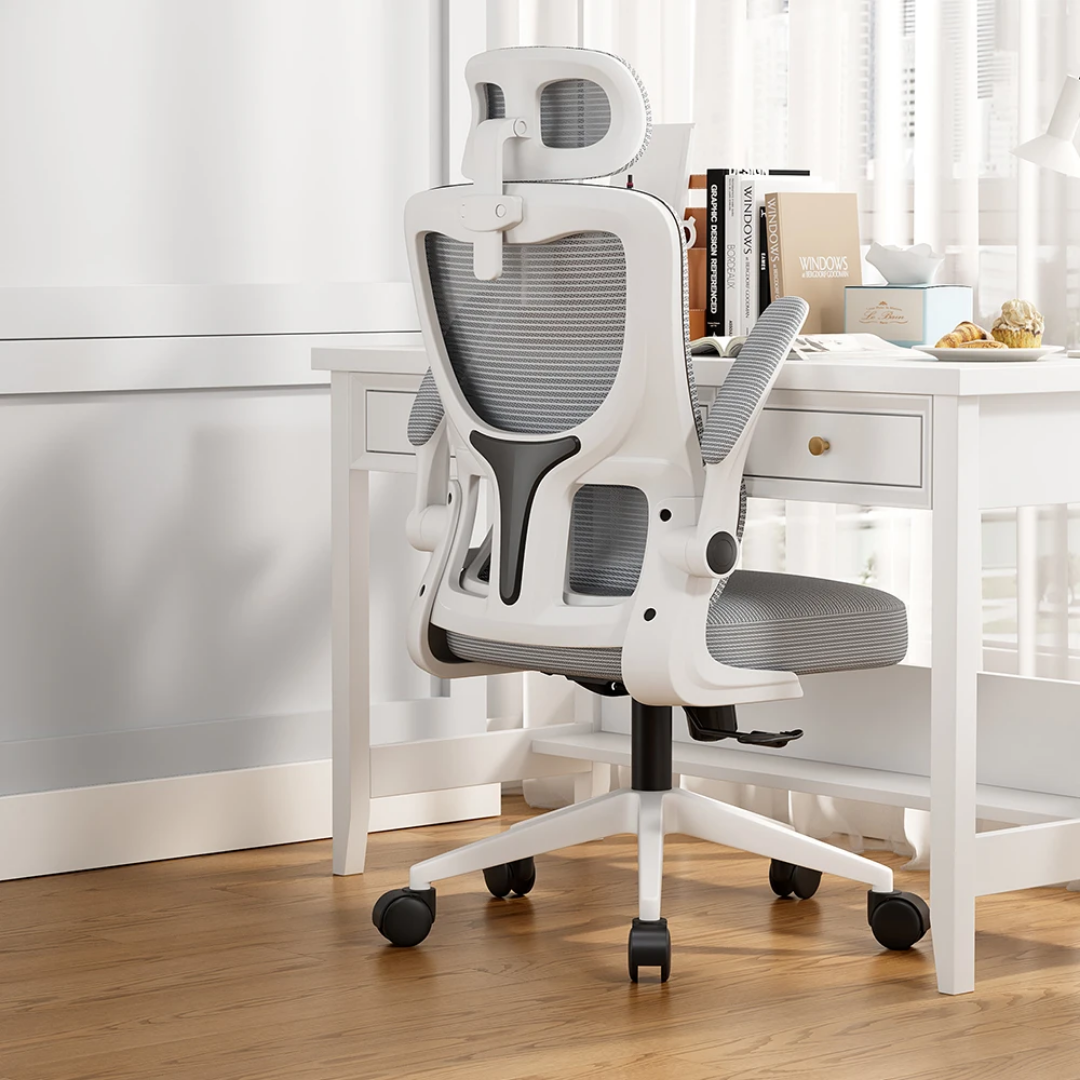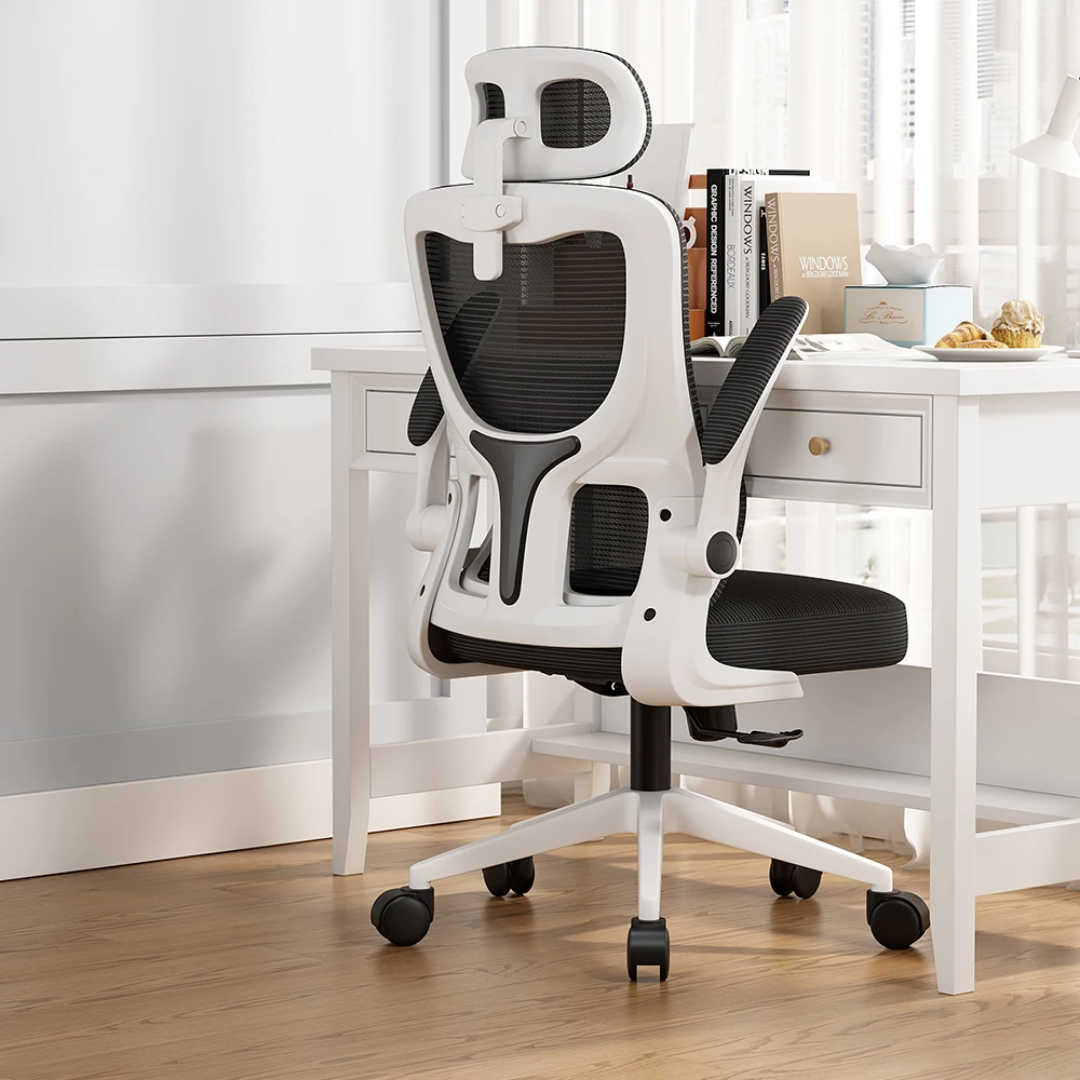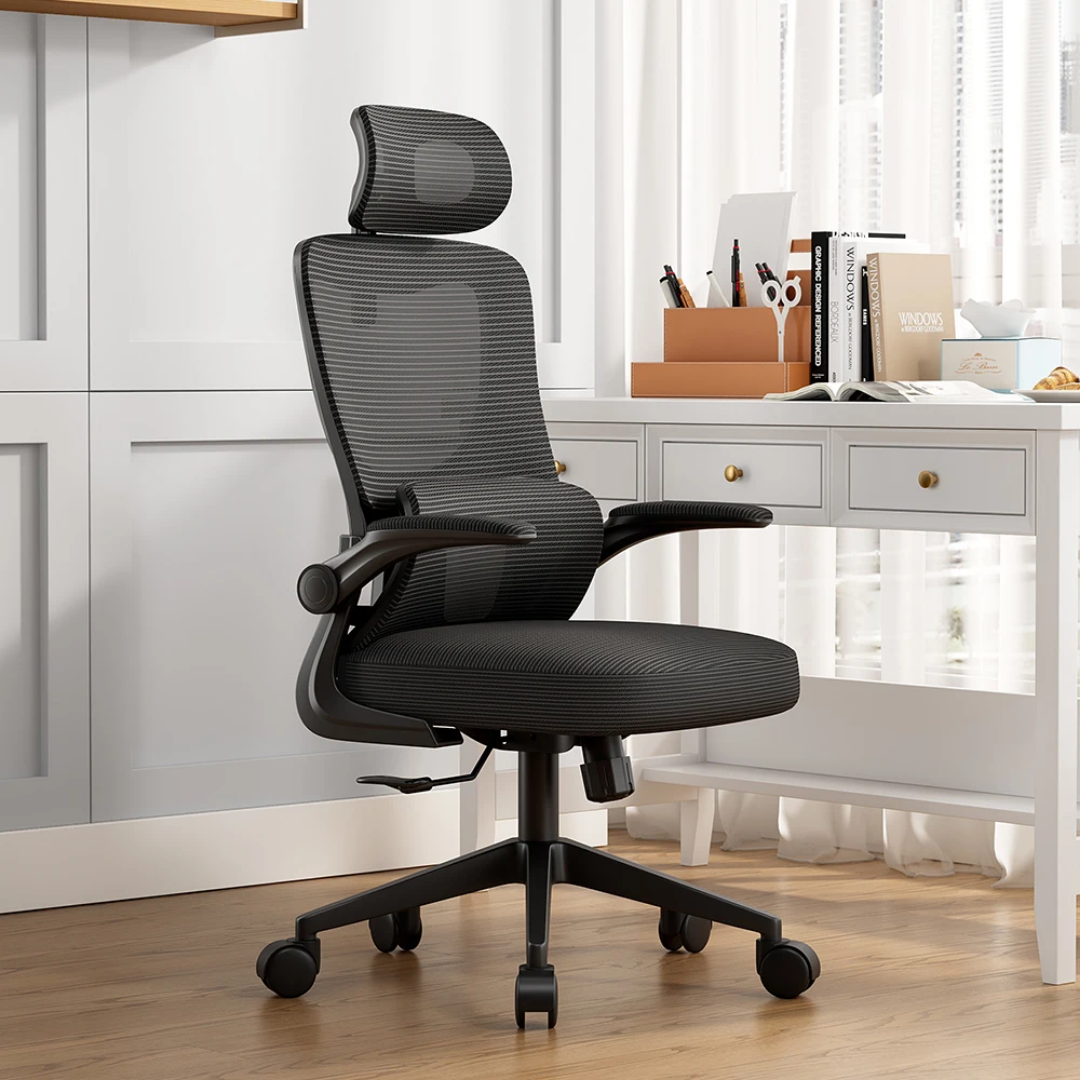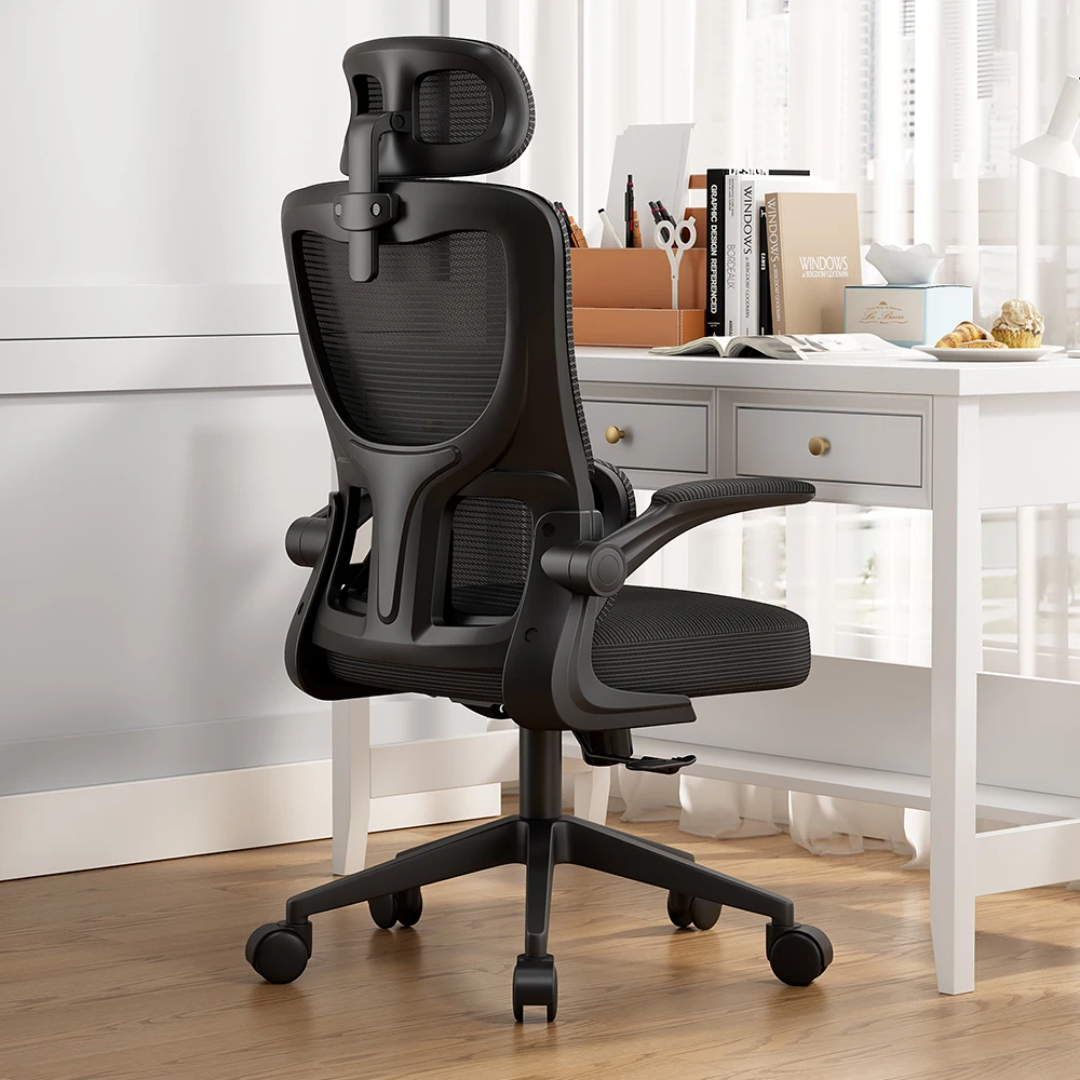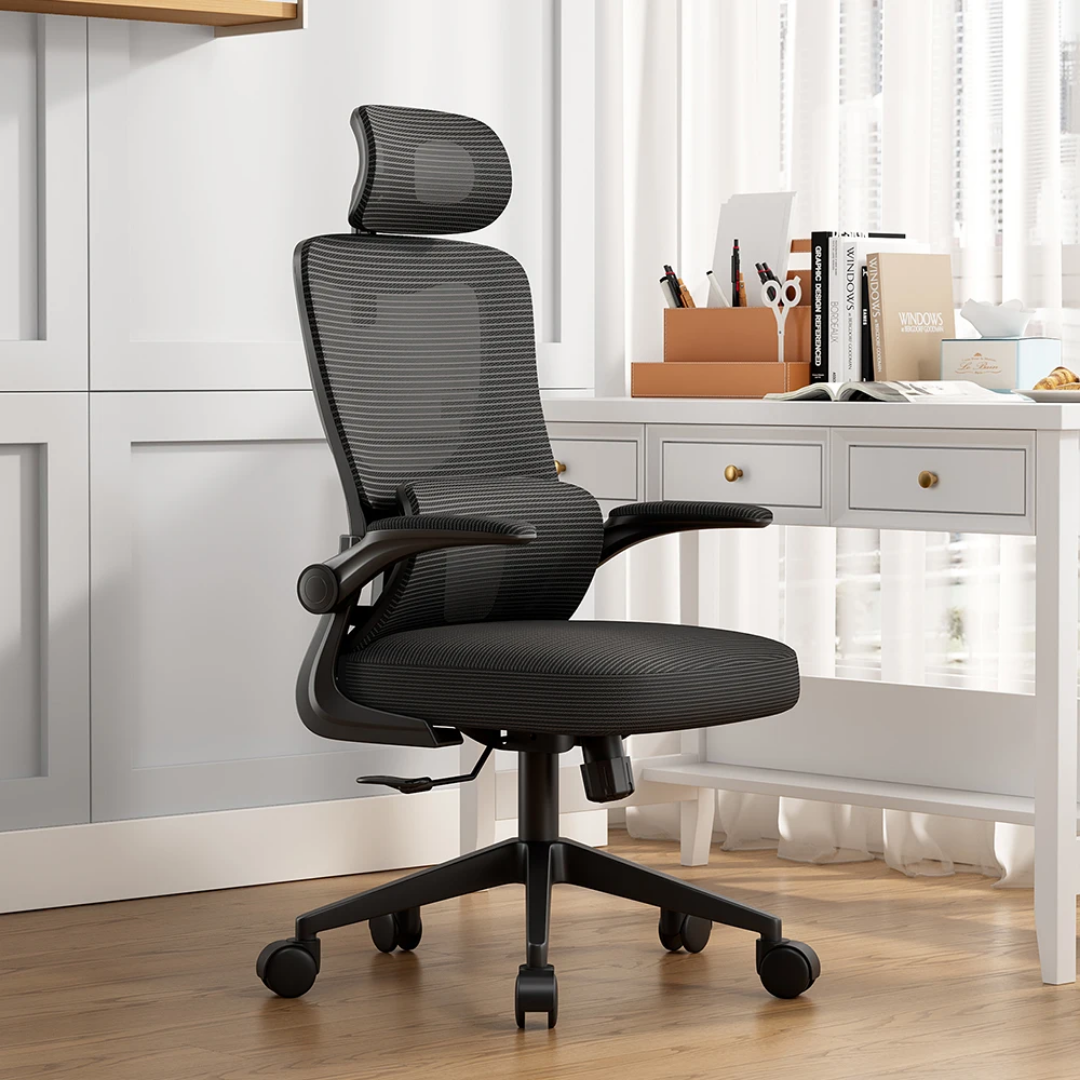An ergonomic office chair is specifically designed to support the body, promote good posture, and reduce strain during long periods of sitting. Here are the key features that define an ergonomic office chair:
1. Adjustable Seat Height
Allows users to set the seat so their feet rest flat on the floor.
Thighs should be horizontal with knees at a 90-degree angle.
2. Lumbar Support
Built-in or adjustable lumbar support helps maintain the natural curve of the lower spine.
Reduces the risk of lower back pain from prolonged sitting.
3. Adjustable Backrest
Height and angle adjustments accommodate different spine lengths and sitting preferences.
Recline or tilt functions often include tension control to support movement and posture changes.
4. Seat Depth and Width
The seat should be wide enough to support the user comfortably.
Proper depth ensures a few inches of space between the seat edge and the back of the knees.
5. Armrests
Adjustable in height and sometimes width or angle.
Should allow the user’s shoulders to relax, with elbows resting close to the body.
6. Swivel and Casters
A 360-degree swivel base and smooth-rolling casters increase mobility and reduce strain from twisting or reaching.
7. High-Quality Cushioning
A breathable, padded seat and backrest increase comfort.
Foam density and fabric breathability contribute to prolonged usability.
8. Headrest (Optional)
Provides additional support for the neck and shoulders, especially in reclining positions.
Benefits of an Ergonomic Chair
Reduces musculoskeletal stress
Enhances productivity and focus
Improves posture and circulation
Minimizes discomfort and fatigue during long work sessions

